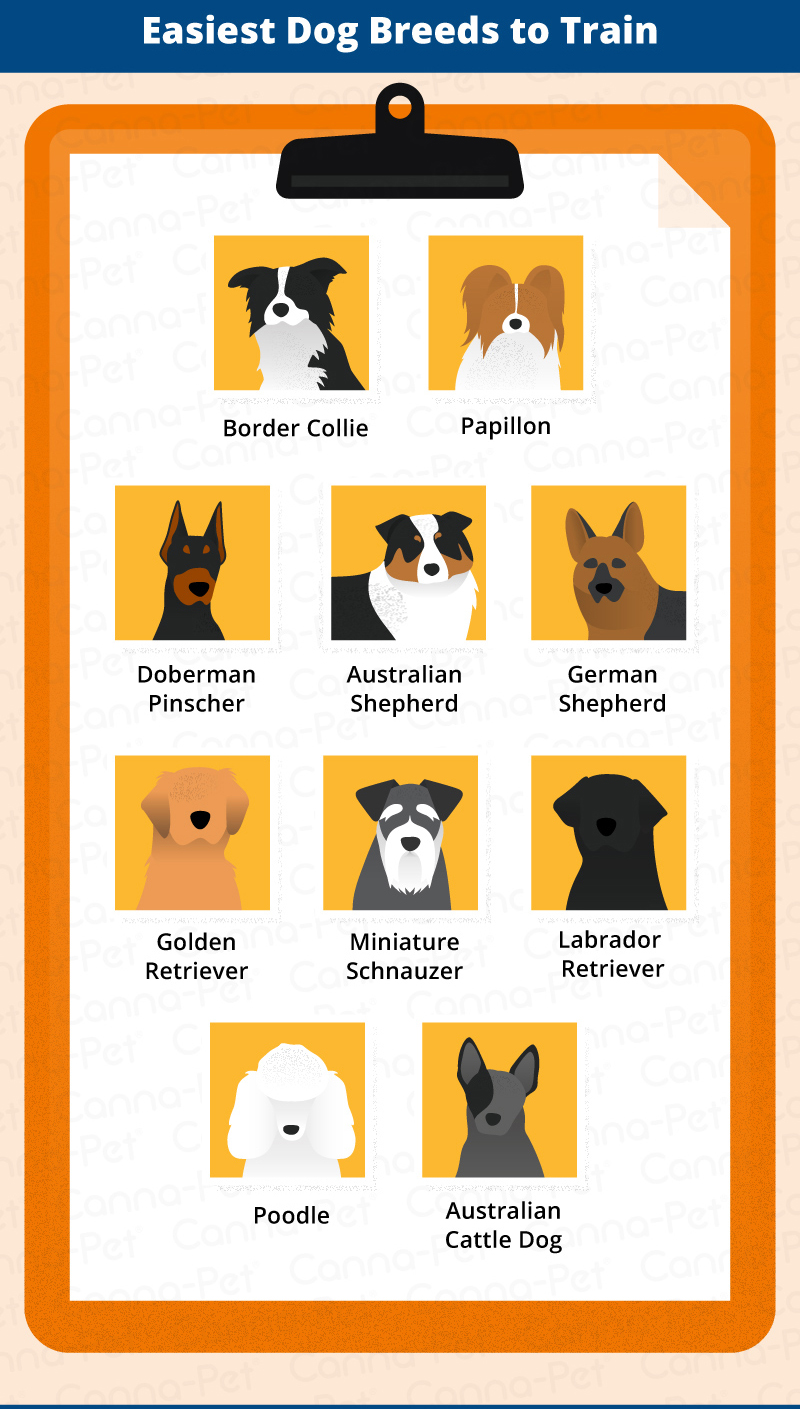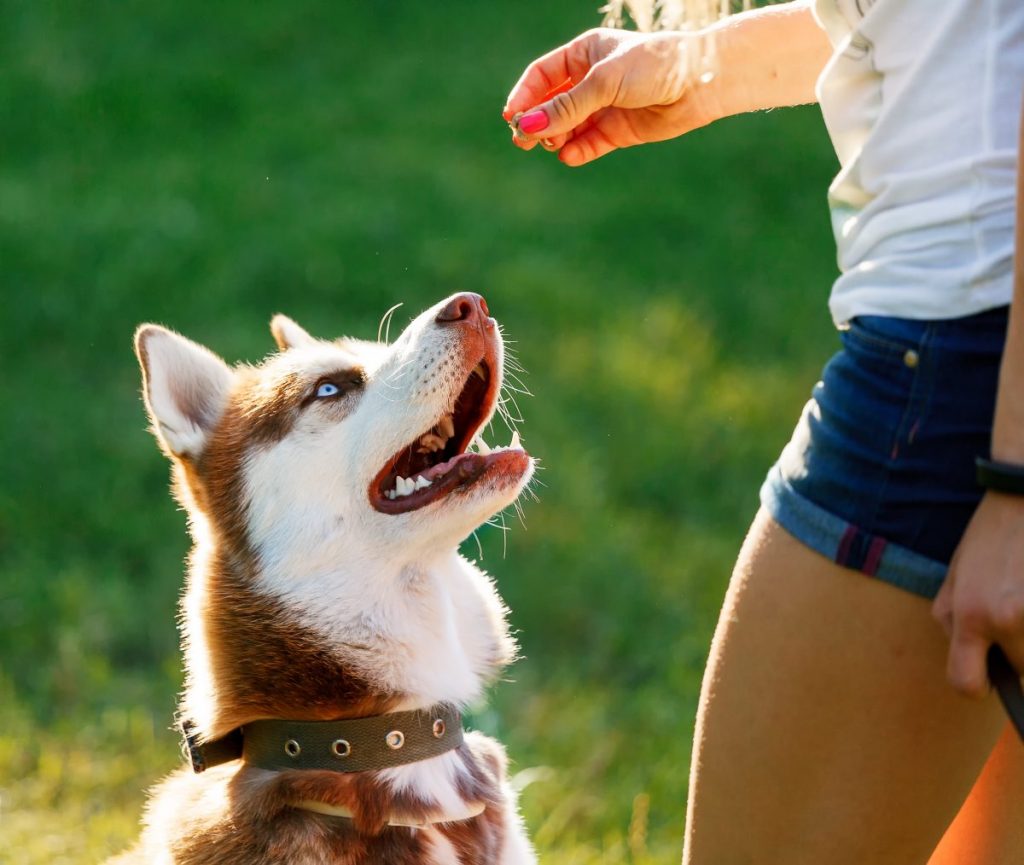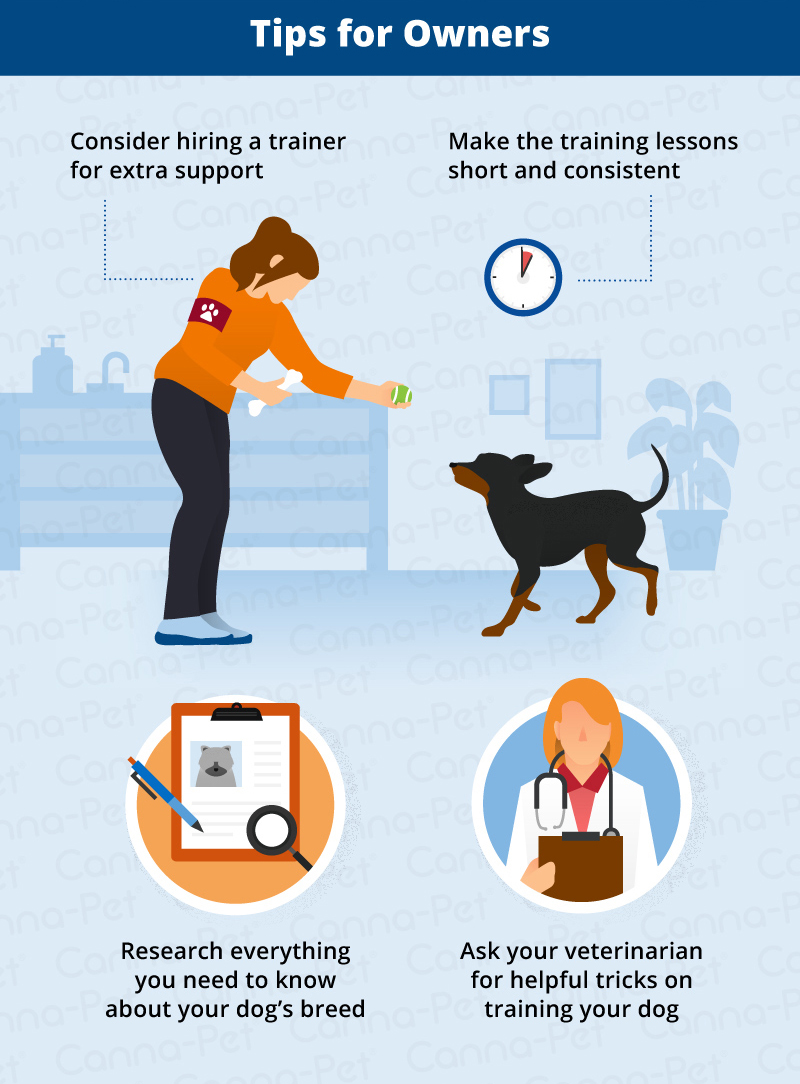If you’re thinking about getting a dog, one question you may have is: What are the easiest dog breeds to train? This is especially true for any first time dog owners.
When it comes to dogs that are particularly easy to train, the list is rather lengthy, and with good reason. There are a lot of smart dog breeds out there! Searches across the web can deliver a surprising variety of breeds. Below is a concise list of the top ten easiest dog breeds to train.
But first, it’s important to go over what exactly makes a dog easy to train in the first place.
What Makes a Dog Easy to Train?
There are actually more factors involved than you’d think as to whether or not a dog will be easy to train. It isn’t as simple as a dog breed being smarter than another.
The first depending factor is a dog’s age. How old a dog is during training actually makes a huge difference in how easy he will be to train. Training a 10 to 12-week-old puppy, for instance, can go either way, and it actually depends on the training program that you choose to use with your puppy.
You’ll have much more success with a training program that takes your puppy’s short attention span into account over a program that requires longer focus than your young pup is capable of handling. If you train a young puppy within his means and help him learn as much as he can, you will have a much more successful training experience.
Puppies can be especially hard to train when they are between four and a half and five months of age. This is the time period during which puppies are teething. You can still train them during this time, but they will not be able to concentrate as much, so it is generally a good plan to pull things back a bit and ease up on your expectations.
Your puppy may also be difficult to train when he reaches adolescence, at around nine to 14 months old. Although he is past his teething stage and old enough to be able to concentrate at this time, dogs may have a hard time with training as they transition from being a puppy to an adult. You can think of this time period as a dog’s teenage years. Some dogs will have a harder time than others during this phase, and you should still continue to train your dog during this time.
Meanwhile, once dogs reach adulthood, they will usually be much easier to train. This will be especially true for those dogs that were introduced to training early in their life. A dog that understands how to learn new things will be much more receptive to further training as he moves into his older years. The ability to learn should remain throughout a dog’s lifetime.
However, a dog’s physical and mental health can also affect how easy they are to train.

The Effects of a Dog’s Physical & Mental Health
Dogs that are at peak physical and mental health are able to retain things that they learn. A dog with physical or mental difficulties will have a harder time picking up on training or may not be open to train with you at all. Compare it to yourself. When you’re injured or not feeling well, are you as willing to focus and learn something new? Probably not.
Therefore, if your dog has any kind of injury, you should stop, or at least reduce training until it has healed. There are a couple of factors here that will decide whether to reduce training or stop completely for a while. The first is where you were at with your training when the injury occurred, as you don’t want to lose all of the progress you made. The second is the severity and location of the injury and if it will make training difficult for your dog.
Light trick training will usually be OK for your dog as long as it doesn’t aggravate the injury. This will help keep your dog sharp and not get bored as he heals, as well as not forget everything he has already learned.
Meanwhile, you should generally suspend training entirely if you’re dealing with a dog who is sick. The reason for this is twofold. Training will be difficult for your dog while he recovers from an illness, and because of this, you may inadvertently cause your dog to dislike training altogether, because he finds it frustrating. This could cause problems when you attempt to resume normal training once he is healthy again.
Dogs that have mental health issues often face difficulties with training as well. These include separation anxiety and fear. For these dogs, you should consult a professional behaviorist who can help assess your dog’s mental health issues and help guide you both through the training process.

It’s the Owner’s Responsibility
As your dog’s owner, you control your dog’s training program and literally and figuratively hold the leash. Your dog’s breed will play a part in how easy he is to train, as well as the other factors listed above, but the owner or the person training the dog is actually more important.
When you get a dog, you should learn as much as you possibly can about the breed. This means if you’re getting a mix, you’ll have more homework to do. If you get your dog from a breeder, they should be able to give you good information about the breed and family history of the dog, rather than just making you a sales pitch. It’s also a good idea to talk to trainers about specific programs for your breed of dog.
Easiest Dog Breeds to Train
Border Collie
When people think of Border Collies they most often think of Lassie, the most famous of them all. Border Collies are incredibly smart and capable of learning a wide variety of tricks. Known as workaholics, they are eager to constantly learn new things, which makes for great dogs to train.
But this comes with the caveat that as hunting dogs, they are highly active and will rarely sit still. They will require daily exercise to burn off their energy. But if you want an active dog that you can play fetch and Frisbee with, teach agility games, or even herd sheep, the Border Collie might be for you.
Golden Retriever
Another highly intelligent breed, Golden Retrievers are also among the most devoutly loyal breeds of dog, and will do anything to please their owners. This means they are very receptive to training.
Like their Labrador counterparts (below), Goldens require daily exercise and make great hunting or service dogs. Their friendly nature makes them prone to distraction, but this is often outweighed by how eager they are to please and how much they enjoy learning.
Labrador Retriever
Labrador Retrievers are hugely popular and very similar in nature to their Golden cousins. Both breeds are very gentle, easy to train, and are known for their playfulness and intelligence. Labs are highly versatile and are essentially capable of learning anything you can teach them. But as high energy puppies, they will take a little patience and work, but it will be worth it.
Australian Shepherd
Like Border Collies, Australian Shepherds can learn a wide variety of tricks and are great dogs for highly active owners. This breed can learn every trick in the book, and they tend to pick things up rather quickly. As working dogs, they need a task to be happy. However, without plenty of time to play and learn new tricks, Aussies can turn destructive.
Poodle
Very well known for their looks, Poodles are exceptionally smart dogs that are easy to train. They are capable of learning all sorts of tricks and commands. They are often thought of as too smart because they will sometimes outsmart their owners or become stubborn. Poodles also come in three sizes (standard, miniature and toy) and are hypoallergenic, making them extra attractive to owners with allergies or those who don’t want to deal with fur everywhere.
German Shepherd
A staunchly loyal, intelligent, and dependable breed, German Shepherds are highly trainable dogs who are eager to please. It’s no coincidence they’ve been used as police and military dogs for years. Yet another breed that needs a job to do to be satisfied, German Shepherds pick up on commands quickly and make for great companions.
Australian Cattle Dog
A herding dog known for their agility, strength, and courage, Australian Cattle Dogs are also highly intelligent and extremely loyal to their owner once you establish yourself as their leader. You’ll have one of the most rewarding experiences you can have as a dog owner if you can provide an active, challenging environment for this clever and fun breed.
Doberman Pinscher
You might be surprised to find the Doberman on this list, but you shouldn’t be. Despite a reputation as a guard or attack dog, when properly trained, Dobermans make great pets. They are fast and strong dogs, but also highly intelligent, and when given plenty of training, will be highly satisfied and loyal pets.
Papillon
Like the Doberman, toy breeds don’t have the best reputation, often thought of as stubborn and yippy. But the Papillon is thought of as a hidden gem. These tiny dogs are quite smart and enjoy plenty of exercise and activities. But without proper training, you’ll be surprised how much noise and destruction these little guys can create.
Miniature Schnauzer
Another smaller dog, Miniature Schnauzers have high energy and agility, but are also very obedient. They do tend to bark, but this is a behavior that can be curbed if you are able to teach the dog early on. It may never stop entirely, but you should be able to keep it to a minimum. Beyond the possibility of barking, a properly trained Miniature Schnauzer makes a great pet.
No matter what breed you choose, don’t be afraid to seek the help of a professional trainer

Regardless of how “easy” to train a dog may be, it’s still going to take some work. And if you’re a first time dog owner, you probably don’t know where to start. It is in your best interest to seek some help at the beginning. You can even talk to family, friends and neighbors who have well-behaved dogs for tips.
Talk to your veterinarian when you bring your dog home. Ask them if they know of a trainer, or even if they have heard of your breeder and know their reputation. This isn’t something you should be shy about — ask for all the help you can get! It will make for a smoother learning process for both you and your dog.
You’ll learn what to expect from your dog and create rules for your house and how to train your dog to meet them. Plus, you’ll learn how to properly walk and travel with your dog and play games. This is how you really get an easy-to-train dog.
Training a dog takes patience and consistence and perhaps even a sense of humor. But eventually, you’ll form the bond you’ve been looking for and have a happy life together.
Sources:
- “12 Of The Easiest Dog Breeds To Train.” IHeartDogs.com, 16 Aug. 2018, Accessed 2 June 2017. www.iheartdogs.com/easiest-dog-breeds-to-train/.
- Ashley, Sarah. “The 10 Easiest Dog Breeds to Train.” PureWow, 17 Aug. 2018, Accessed 2 June 2017. www.purewow.com/family/trainable-dog-breeds.
- “10 Easiest Dog Breeds to Train.” Chewy Pet Central, 7 June 2018, Accessed 2 June 2017. www.chewy.com/petcentral/behavior-breeds-10-easiest-dog-breeds-to-train/.
- Seymour, Kristen. “What Are The Best Dogs for First-Time Owners? Vets Place Their Votes.” Vetstreet, Accessed 2 June 2017. www.vetstreet.com/our-pet-experts/veterinary-professionals-vote-on-the-best-dogs-for-new-owners.
- Brouwer, Charlotte. Top 10 Family Friendly Dog Breeds. Good Housekeeping, 28 Sept. 2018, Accessed 2 June 2017. www.goodhousekeeping.com/uk/news/a561691/the-top-10-family-friendly-dog-breeds-for-families-with-small-children/.





